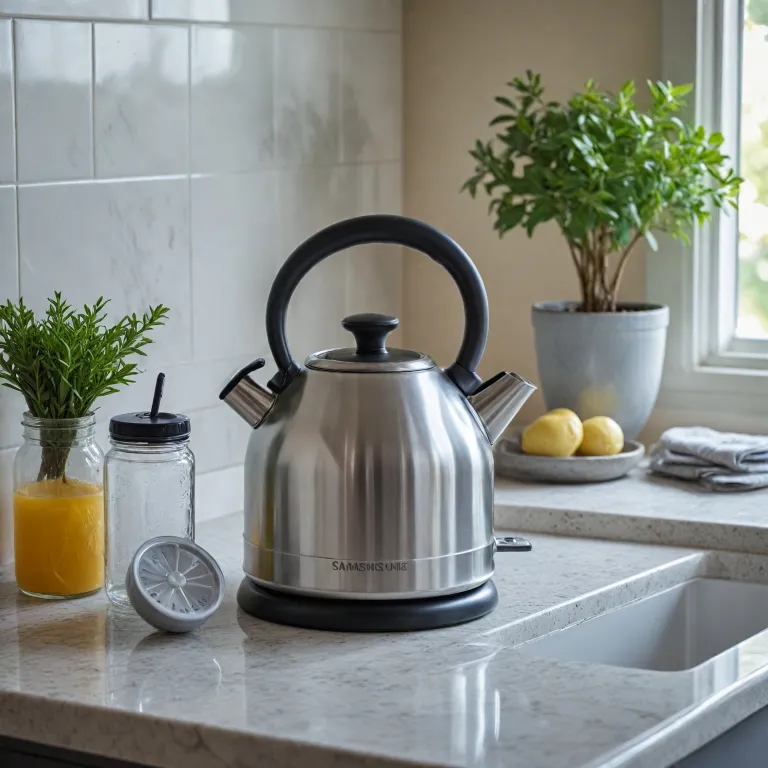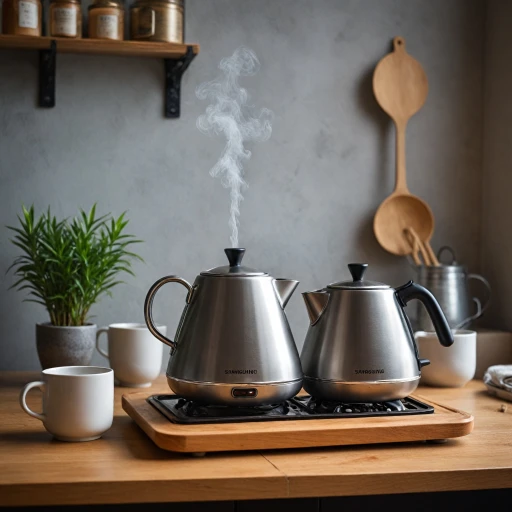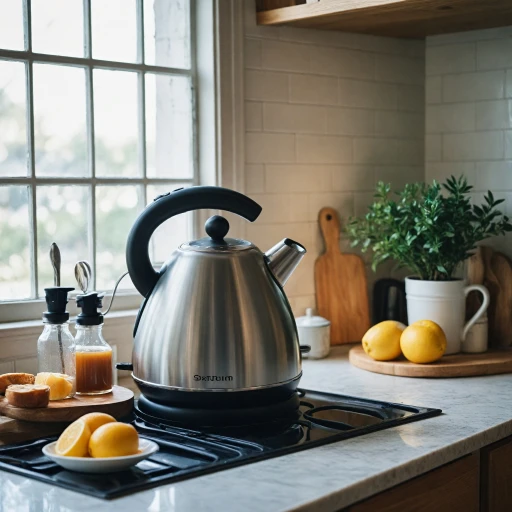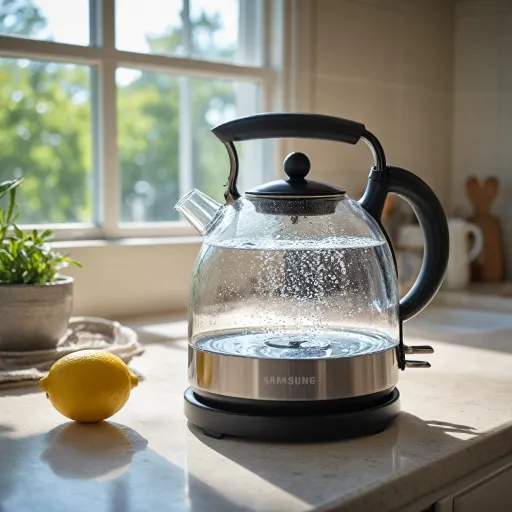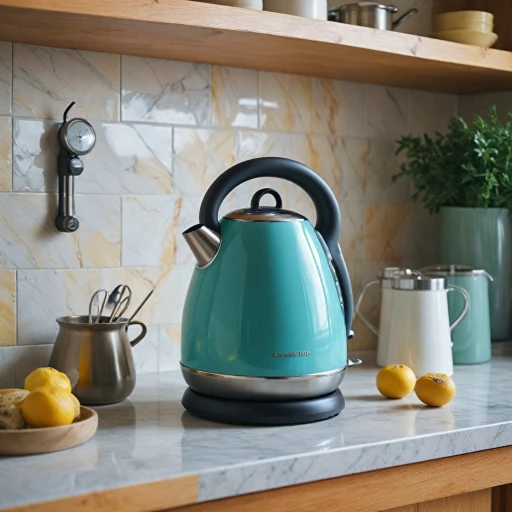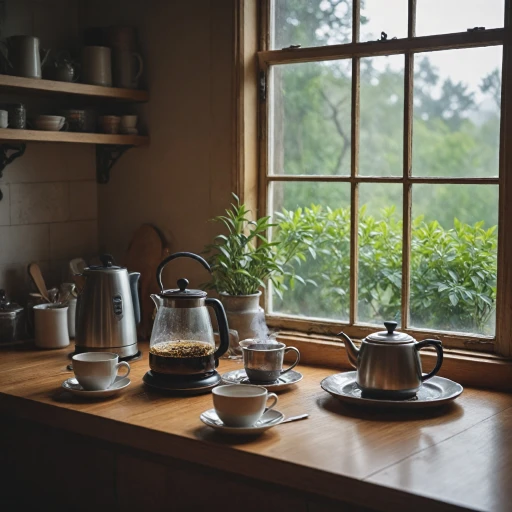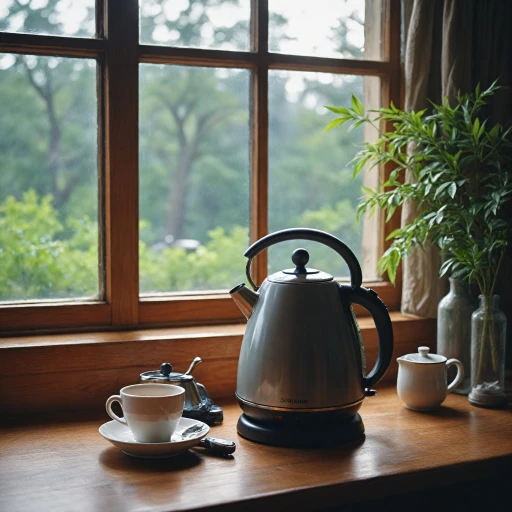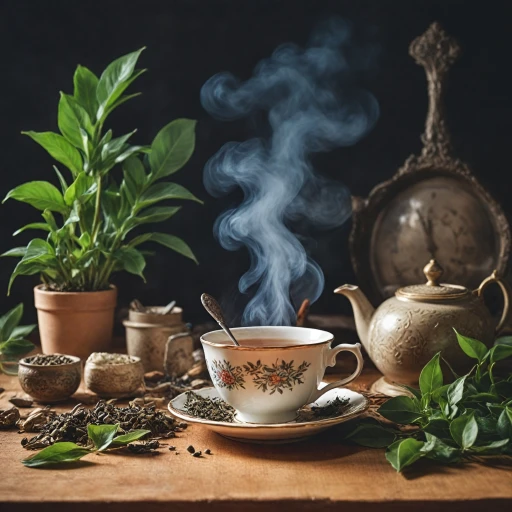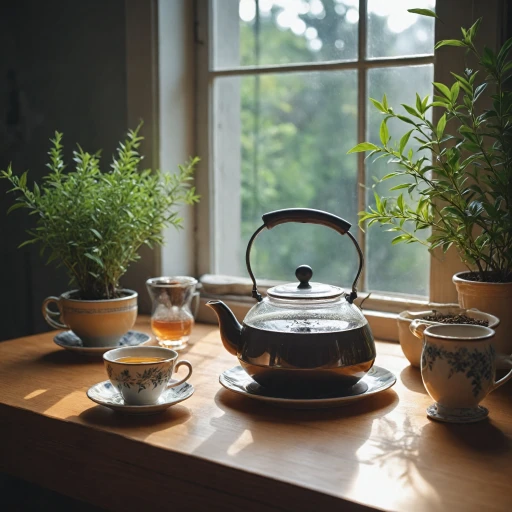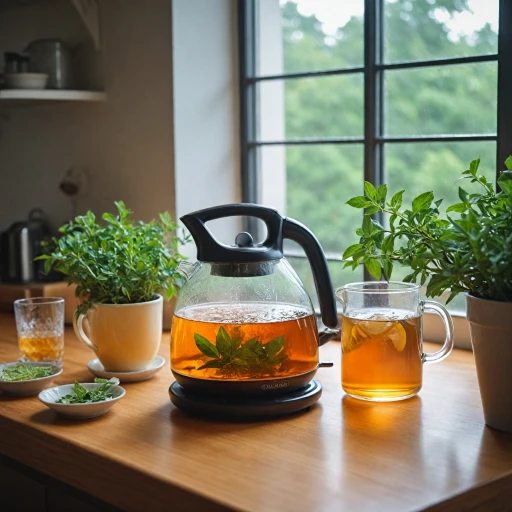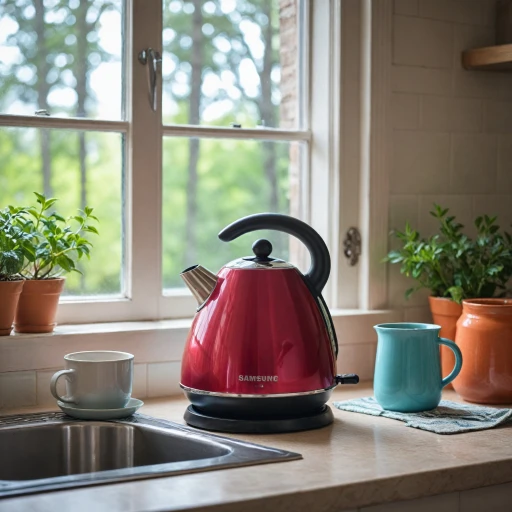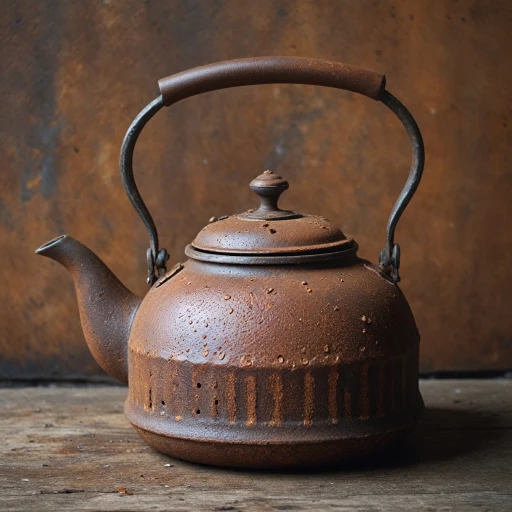
Understanding the Importance of Regular Cleaning
Why Consistent Maintenance Matters for Your Tea Kettle
Regular cleaning of your stainless steel tea kettle is crucial for maintaining its functionality and aesthetic appeal. Over time, mineral deposits from hard water, along with daily use, can leave unsightly stains and reduce your kettle's efficiency. Ensuring that your kettle remains spotless not only prevents these unsightly buildups but also prolongs its lifespan. A consistently well-maintained kettle heats water efficiently, perfect for brewing your favorite teas or coffee. When mineral deposits like limescale accumulate, they can interfere with heat distribution, leading to longer boiling times and potentially increased energy consumption. This can even lead to the development of rust spots, further compromising your kettle’s integrity. Moreover, a clean kettle improves the taste of your brews, since leftover residues from previous usage can alter the flavor of your hot beverages. In severe cases, such residues can pose health concerns, making it vital to keep your kettle well-maintained. For more insights on the causes and solutions for rust in tea kettles, check out this detailed guide. Regularly cleaning your kettle also ensures that every brew is fresh, enhancing the experience of every cup. By understanding the importance of regular cleaning, you pave the way for an efficient and clean brewing process, leading to a superior taste and a more enjoyable experience in your daily tea rituals.Gathering the Right Cleaning Supplies
Essential Supplies for a Sparkling Kettle
When it comes to maintaining your stainless steel tea kettle, the right cleaning supplies can make a world of difference. These tools and solutions will help you tackle those unsightly stains and residue left by hard water, ensuring your kettle remains in top condition.- Soft Scrubbers and Sponges: To gently remove grime without scratching the steel surface. It's best to steer clear of abrasive pads that may damage your kettle.
- White Vinegar: A natural powerhouse for dissolving mineral deposits and limescale that often accumulate in your tea kettle. It's known to effectively cut through hard water stains.
- Baking Soda: When paired with white vinegar, this acts as a great non-toxic cleaner that can help scrub kettle surfaces clean and remove those stubborn spots.
- Dishwashing Soap: Mild and designed to cut through grease, this is essential for everyday cleaning and to ensure your kettle's exterior remains polished and shiny.
- Cotton Towels or Microfiber Cloths: These are perfect for drying your kettle thoroughly after rinsing, which helps to prevent water spots and the formation of rust. Learn more about rust management in kettles here.
- Olive Oil: While not a cleaning agent, a little olive oil rubbed onto the exterior of your kettle can help protect the surface and maintain its luster.
Step-by-Step Cleaning Process
Initial Cleaning Steps for a Spotless Kettle
To get started on making your stainless steel tea kettle spotless, you'll want to gather some basic cleaning tools. While there are a variety of cleaning methods you can consider, sticking to a step-by-step approach ensures the most effective results, especially for removing stubborn stains and build-up.
- Unplug and Cool Down: If you're using an electric tea kettle, always ensure it is unplugged and allowed to cool completely before attempting to clean it. This reduces the risk of burns and ensures your safety.
- Initial Rinse: Fill the kettle with warm water and give it a quick rinse. This helps in loosening any loose particles or residues.
- Prepare the Cleaning Solution: Mix equal parts of white vinegar and water. This solution is renowned for its ability to tackle hard water and mineral build-up, making your kettle shine like new.
- Soak and Settle: Pour the vinegar and water mixture into your stainless steel kettle until it's filled halfway. Leave it to sit for at least 20 to 30 minutes. This soaking phase helps break down any gritty mineral deposits.
- Boiling the Solution: If your kettle is designed for use on a stovetop or is an electric kettle with boil-dry protection, you can bring the vinegar solution to a boil. This amplifies the cleaning potential of the vinegar.
Once the boiling is complete, proceed by carefully discarding the kettle water. You will notice a remarkable difference in the cleanliness of your kettle's interior. For stubborn residue, you might need to repeat the process or add baking soda into the mix for additional scrubbing power.
These steps lay a strong groundwork for cleaning your tea kettle effectively, allowing you to brew your tea with confidence that your appliance is in optimal condition.
Natural Cleaning Solutions
Eco-Friendly Alternatives for Keeping Kettles Spotless
For those interested in preserving their stainless steel tea kettle while minimizing the use of harsh chemicals, natural solutions offer a fantastic alternative to traditional cleaning methods. These strategies are effective in tackling stubborn stains, removing mineral buildup from hard water, and maintaining the overall integrity of your kettle.- Vinegar Magic: Utilizing white vinegar is one of the best natural options for cleaning stainless steel. Fill the kettle with a 1:1 ratio of water and vinegar, bring it to a boil, and allow it to sit. Afterward, rinse thoroughly with hot water. This will dissolve mineral deposits and clean the kettle without damaging its steel surface.
- Baking Soda Brilliance: Baking soda is a versatile agent that, when combined with water, forms a gentle abrasive paste. Apply this mixture with a soft cloth to scrub the kettle's interior and exterior gently, targeting tough spots and stains. Rinse with warm water and dry with a soft cloth to prevent water spots.
- Citrus Power: Lemons can also offer a fresh and natural way to clean your kettle. Fill the kettle with water and add sliced lemons. Bring to a boil then let it cool. The acidity in lemons will cut through the grime, leaving behind a refreshing citrus scent.
- Olive Oil Shine: For an added shine, a few drops of olive oil on a cloth can be used to polish the exterior of the kettle. Gently rub the surface to maintain its glossy finish, ensuring your steel kettle looks as good as new.
Preventive Measures to Avoid Future Build-Up
Prolonging the Life of Your Tea Kettle
Incorporating preventive measures into your routine will keep your stainless steel tea kettle functioning optimally and looking its best. Here are some tips to help you avoid future build-up and prolong the life of your kettle:
- Regular Care: Make it a habit to empty and rinse your tea kettle after each use. Leaving water inside can cause mineral deposits to form over time, especially if you have hard water. A quick rinse with warm tap water and drying with a soft cloth is effective in maintaining the kettle’s interior.
- Mild Cleaners: Use mild dishwashing soap and warm water for daily cleaning. Avoid harsh chemicals that might damage the finish of your stainless steel kettle. If necessary, a soft sponge or cloth will suffice to scrub kettle lightly, especially areas near the spout and handle.
- Use of Natural Solutions: Incorporate natural cleaning solutions such as white vinegar or baking soda for routine cleaning. Both are effective at removing stains and preventing residue build-up without damaging the kettle. A mixture of water and vinegar can be gently boiled in the kettle to dissolve any lingering deposits.
- Protection from Heat: Avoid using high heat when using a stovetop kettle. Excessive heat can not only lead to discoloration but can also weaken the material over time. Opt for controlled boiling to ensure the longevity of your steel kettle.
- Dry Thoroughly: Post-cleaning, make sure to thoroughly dry your kettle before storing it. This step will prevent water spots and keep the metal shiny. Air drying might be convenient, but wiping with a soft towel yields the best results.
- Address Hard Water: If you frequently encounter hard water deposits, investing in a water softener could be worthwhile. Softening the kettle water before use can significantly reduce the residue over time.
By following these simple yet effective preventive measures, you create a proactive approach to kettle care. Over time, you’ll notice less frequent build-ups and a kettle that remains a reliable partner for your daily brews.
Troubleshooting Common Cleaning Issues
Solve Frequent Challenges with Ease
Even with the best care, you might encounter some common issues while keeping your stainless steel tea kettle in top condition. Here’s a quick guide to troubleshoot these problems effectively:- Stubborn Stains: If stains persist despite using white vinegar or baking soda, you might need to repeat the cleaning step a few more times. A gentle scrub with a paste made of baking soda and a few drops of water can do wonders. Remember to rinse thoroughly after.
- Residue After Cleaning: Any residual marks or a dull finish can often be attributed to hard water. Rinse the kettle's interior with a solution of equal parts vinegar and water, let it sit briefly, then rinse again with cold water.
- Persistent Odors: If the vinegar smell lingers after cleaning, boiling a pot of clean water with a slice of lemon or adding a touch of olive oil can effectively neutralize it.
- Spout Blockages: Small, stubborn deposits can accumulate even in the spout. Use a flexible brush or swab dipped in soap water to scrub away any build-up for a more clean, open kettle spout.
- Dishwasher Use: Not all kettles, especially electric tea kettles and stovetop models, are dishwasher safe. To prevent damage, always check the manufacturer’s instructions before putting them in the dishwasher.
- Scratches or Marks: If your kettle is showing signs of wear, a light application of olive oil with a soft cloth can help polish it, restoring some of its original shine.
